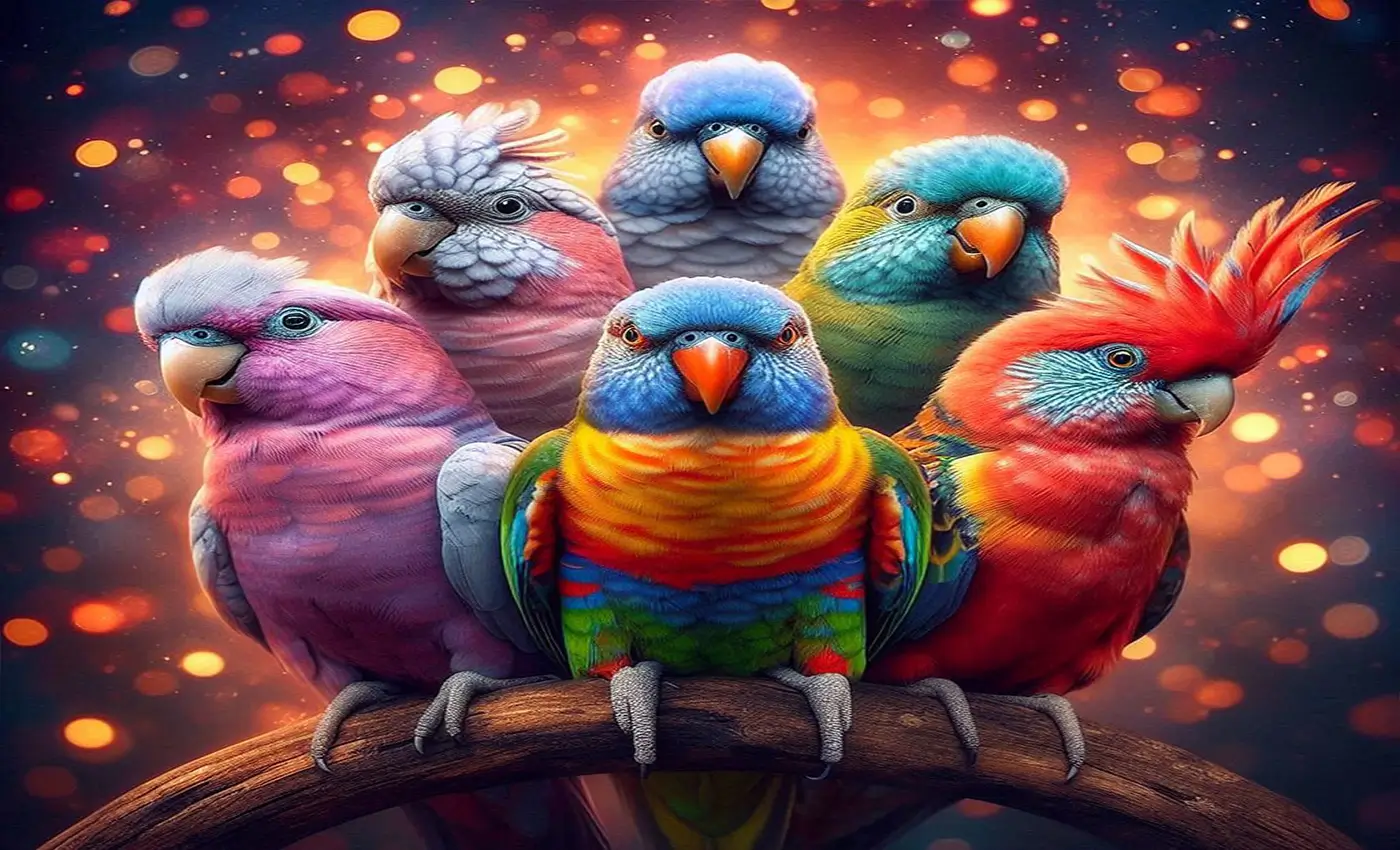Rosella Parrots (Platycercus): The Vibrant Avian Companions

Physical Characteristics
Size and Appearance
Rosella parrots are medium-sized birds, with a body length ranging from 25 to 35 cm (10 to 14 inches) and a weight of approximately 120 to 170 grams (4.2 to 6 ounces). Their most striking feature is their vibrant plumage, which varies significantly among the different species. Some common color patterns include:
- Crimson Rosella: Predominantly red with blue cheeks and black scalloping on the back.
- Eastern Rosella: Bright yellow with red head and upper breast, white cheeks, and greenish-blue wings.
- Green Rosella: Yellow underparts, olive-green upperparts, and blue cheeks and wings.
Distinctive Traits
Rosella parrots have a wide, stepped tail and a strong, curved beak that they use to crack open seeds and nuts. Their colorful feathers not only make them visually appealing but also serve as a means of camouflage in their natural habitats, blending seamlessly with the vibrant flora.
Behavior and Social Traits
Friendly and Inquisitive Nature
Rosella parrots are known for their friendly and inquisitive nature. They enjoy exploring their surroundings and interacting with their human companions. However, they do not tolerate loneliness well and require a lot of attention to remain happy and healthy. Social interaction is good for their mental stimulation and well-being.
Suitability as Pets
While Rosella parrots can make excellent pets, they are best suited for experienced bird owners. Their need for social interaction and stimulation means they require a significant amount of time and attention. Prospective owners should be prepared for the commitment to ensure these birds thrive in a home environment.
Habitat and Distribution
Native Regions
Rosella parrots are native to Australia and Tasmania. They inhabit a variety of environments, including woodlands, forests, gardens, and parks. Their adaptability to different habitats has helped them thrive in both rural and urban areas.
Diet in the Wild
In their natural habitat, Rosella parrots have a varied diet that includes seeds, fruits, nectar, and insects. This diverse diet provides them with the necessary nutrients to maintain their vibrant plumage and overall health. In captivity, their diet should mimic their natural food sources as closely as possible.
Conservation Status
Current Threats
While no species of Rosella parrots are currently listed as endangered, uncontrolled trade and habitat loss pose significant threats to their populations. The pet trade, in particular, can have detrimental effects if not regulated properly. Conservation efforts are essential to ensure these birds do not face a decline in the future.
Conservation Measures
To protect Rosella parrots, it is important to support responsible breeding practices and adhere to regulations regarding their trade. Additionally, preserving their natural habitats and promoting awareness about their conservation can help safeguard these beautiful birds for future generations.
FAQs
1. How can I provide a suitable environment for my Rosella parrot at home?
To create a comfortable environment for your Rosella parrot, ensure their cage is spacious enough for them to spread their wings and move freely. provide perches, toys, and enrichment activities to keep them physically and mentally stimulated. Repetitive social interaction is good for their wellness.
2. What is the ideal diet for a Rosella parrot in captivity?
A balanced diet for a Rosella parrot should include high-quality parrot pellets, fresh fruits, vegetables, and seeds. Nuts can be given as occasional treats. Fresh water should always be available. Avoid feeding them avocado, chocolate, and caffeine, as these can be toxic to birds.
3. How can I train my Rosella parrot to be more sociable?
Training a Rosella parrot involves regular, consistent interaction. Use positive reinforcement, such as treats and praise, to encourage desired behaviors. Spend time talking to them, playing games, and providing various toys to keep them engaged and sociable.
4. Are Rosella parrots good pets for first-time bird owners?
Rosella parrots are best suited for experienced bird owners due to their need for social interaction and mental stimulation. First-time bird owners should thoroughly research and prepare for the commitment required to care for these birds before adopting one.
5. What should I do if my Rosella parrot shows signs of stress or boredom?
Signs of stress or boredom in a Rosella parrot include feather plucking, aggression, and excessive vocalization. To alleviate these issues, provide more mental stimulation through toys, puzzles, and interactive play. Ensure they have ample social interaction and consider consulting an avian veterinarian or a professional bird behaviorist for additional guidance.
Conclusion
Rosella parrots, with their vibrant plumage and friendly nature, make delightful companions for those who can meet their needs. Their inquisitive behavior and ability to form strong bonds with their human caregivers make them a joy to have around. However, their need for attention and mental stimulation means they require a significant commitment from their owners. By understanding their needs and providing a suitable environment, you can ensure your Rosella parrot thrives and brings color and joy to your life. Whether you are an experienced bird owner or considering expanding your avian family, the Rosella parrot offers a fascinating and rewarding experience.
Post Comment